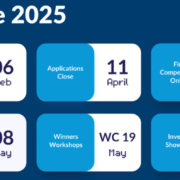One of the most rewarding parts of our job at Walmer Group is helping innovative organisations in navigating the ‘minefield’ that is public (government), and private funding.
For those that are new to the scheme, the R&D Tax incentive rewards companies for undertaking research and development activities, by incurring challenges when making advancements in their field. The financial benefit of taking advantage of R&D Tax Relief is being able to offset a company’s Corporation Tax or receive cash credit injection into the business, with the ability to claim two accounting periods retrospectively.
For those that have some knowledge, or are experienced in claiming the incentive, this article may be of interest to you as it discusses the 9 biggest mistakes that Walmer Group sees companies making when claiming R&D Tax Relief. This is not designed to criticise the work of your company or those that have advised you previously but to simply assist you with future claims.
1. COVID Government Support can impact your R&D Tax Relief claims
With the Government releasing support for UK companies during the pandemic, various funds and loan schemes were introduced to help companies navigate tough times. These included the CBILS (Coronavirus Business Interruption Loan Scheme), Bounce Back Loan, and Furlough. One of the common issues that we have seen with companies seeking R&D Tax Relief, is misunderstanding the effect that these have on their claim.
2. “I am not paying Corporation Tax, therefore I cannot claim R&D Tax”
This is a common misconception we often hear from companies! Regardless of your business being profitable or not (i.e subject to paying Corporation Tax), does not mean that you cannot utilise the R&D Tax Incentive. The scheme can often be more beneficial for loss-making companies, as you can surrender any losses generated in the period of claiming R&D Tax Relief for a cash credit.
3. Not including Qualifying Indirect Activities in your claim
There are additional costs that companies are often eligible to claim, and can include members of staff, such as support staff, that help facilitate the R&D work. These activities can be found for different industries in the government’s HMRC manuals and can have a significant impact on the amount you receive back as part of your previous, or upcoming claim(s).
4. Not considering any linked or partner enterprises
When looking to claim R&D Tax Relief, you need to consider your wider shareholdings and company group structure. If you own, part-own or the claimant company has any parent or subsidiary companies, you may need to include all or apportionment of the following:
- staff count
- turnover
- balance sheet total
The combined total figures should then be considered when determining whether you can claim under the SME scheme (where you can claim up to 33% of your expenditure), or have to submit your claim under the RDEC scheme (where you can claim up to 10.5% of your expenditure).
5. Have you been subcontracted with R&D work? Is it your Intellectual Property?
If R&D work has been subcontracted to you, you need to consider and review the legal agreements between both parties. R&D Tax allocation depends on where the intellectual property resides and the fees associated with the work, which could result in being ineligible to include in the claim.
6. Report Structure & Technical/Scientific Narrative:
As the technical/scientific report, submitted with an R&D claim, aims to provide an overview of how projects are undertaken by a company qualifying for tax relief, it is important to be clear and concise about the advancements and uncertainties faced. We often find that companies focus too much on the commercial merits of a product/solution, rather than the underlying technological advancement made to achieve those merits.
On the other hand, some companies elaborate on their projects in a very technical nature and use sector-specific jargon that can confuse an individual reviewing a claim if they are not fully briefed on the science or technology. The report should clearly outline what the baseline technology (“state-of-the-art”) at the time was and elaborate on the inherent limitations or uncertainties/challenges it presents. As the report will also include a financial assessment, it is important to explain the methodology used to derive the qualifying expenditure and have clear breakdowns of the costs included in a claim.
7. You can claim capitalised expenditure (Intangible Fixed Assets)
Many companies can opt to capitalise expenditure, so it becomes an asset on your balance sheet. This expenditure is typically classed as ‘revenue’ (therefore entered through your Profit and Loss). However, if a company feels the cost/time spent is facilitating something valuable to the business (e.g., employee time, subcontractor invoices, etc spent on developing a product), you can capitalise as an Intangible Fixed Asset and claim R&D Tax Relief.
8. Claiming R&D Tax Relief on Grant-funded projects – Is it Notified State aid? What does that mean?
If you receive a grant that is notified of State aid, this creates complexity when claiming R&D Tax Relief. Under EU funding rules, a company is unable to claim another type of Notified State aid on the same project; When claiming under the SME R&D Tax Incentive, it is classed as Notified State aid. Therefore, any expenditure utilised with the Notified State aid funding, would be ineligible to claim under the SME scheme. For this reason, you would need to claim under the RDEC scheme.
9. Companies that offer VAT-exempt services (e.g. insurance, finance & credit, education & training, fundraising events by charities) and looking to claim R&D Tax Relief can claim any invoices paid inclusive of VAT
UK companies may be eligible to claim part of their R&D spending under HMRC’s R&D Tax Credit Incentive. These companies may be able to claim up to 33% of qualifying expenditure under this scheme. Specialist R&D Tax Consultants exist to provide guidance and assistance to these companies who may be new to the scheme or may not be optimising the amount that they may be entitled to claim back. These companies will either charge a company a fixed fee to do the consulting work for a business or charge a success fee on the money that is returned, once the claim has been approved by the Government.
We, Walmer Group, are an R&D specialist consultancy that exists to help businesses in maximising their claim from HMRC and we work purely off a success fee from funds that have been approved and returned under the scheme. Many advantages exist for Founders and Entrepreneurs under this model, but the main one is that it frees up resources and time that can otherwise, be spent in scaling and raising additional finance for their business growth.
If you would like a complimentary consultation on what your company might be eligible for, email our Commercial Director, James Campbell, at: jcampbell@walmergroup.com











